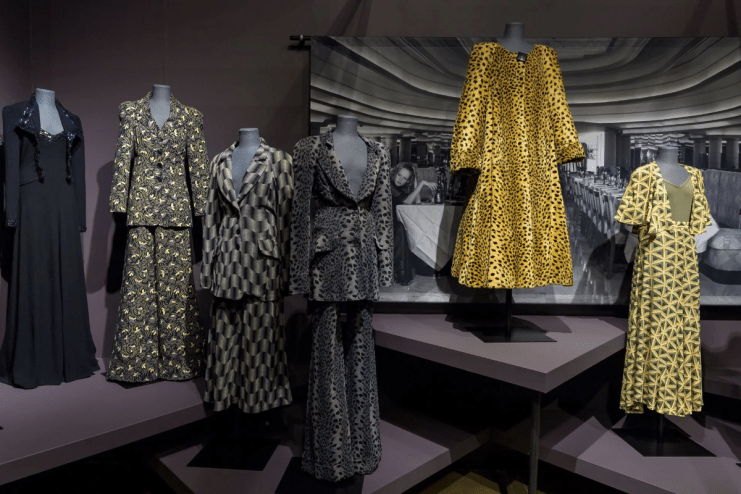The London exhibition celebrating a fashion icon who pioneered LGBTQ and Black rights

This London exhibition celebrates a progressive icon who has mostly been forgotten, says Emma Hollamby
“It isn’t just dresses, it’s a whole way of life,” Biba founder, Barbara Hulanicki (1970). That’s the main message from The Biba Story, 1964-1975, now open at the Fashion and Textile Museum.
Those who know the name will have an image in their mind at the mere mention of Biba. Mine is the luxe, art nouveau gold logo, or skinny bell sleeves cascading from tiny shoulders in deep plum purples. At its height, Biba held a seven storey ‘lifestyle’ department store on Kensington High Street featuring Europe’s largest roof garden (replete with flamingos), a five hundred cover restaurant hosting bands such as The Doors and New York Dolls, and a cult celebrity following.
Sounds exclusive. Yet Hulanicki’s egalitarian outlook meant everyone could be a little bit Biba. On entering the show, womenswear brand Biba’s humble mail order beginnings are remembered through the display of a (replica) pink, gingham mini dress with matching headscarf. Advertised in The Daily Mirror, the dress received 17,000 orders. One year later the first Biba Boutique opened on Abingdon Road.
Comparisons are often made between Mary Quant and Biba, yet a Quant dress retailed around £30 versus £3 for Biba. Accessibility was key
Read more: Fashion brand loved by celebrities and known for £110 t-shirts to open second store in Soho
Collections represent the different shops but also Biba’s life cycles, from the 60’s Biba Girl to the 70’s Biba Woman and the 1974-75 Biba … well, everything. A large part of Biba’s charm is its legendary customer experience, including communal changing rooms, a ‘Mary on every floor’ to help (but really to emulate) and the darkness, with blacked out windows, dim lamps and dark wooden vintage furniture.
It feels like the display tries to emulate the dim lighting, which doesn’t always work, but that doesn’t matter because the fabrics still shine; textured cottons, pin cord and linen for the ultra-wearable, exquisitely shaped coats and shift dresses of the sixties, and satin, chiffon and devoré for seventies pieces that give a nod to old Hollywood. “Most businesses have got so sophisticated that they have forgotten how it all started and why they are there” said Hulanicki in 1970.
Perhaps the best thing about this show is that it radiates the warmth and empathy Hulanicki had for the post-war generation of young women. Comparisons are often made between Mary Quant and Biba, yet a Quant dress retailed around £30 versus £3 for Biba. Accessibility was key. Clothes didn’t feature labels until 1968 to keep costs down for the consumer. Yet success was reinvested.
Read more: The fashion crime of rucksacks over suits is growing in the Square Mile
Biba was also the first to offer a full cosmetics line designed for black skin. They were also the first to advertise in the gay press (homosexuality was only legalized in Britain in 1967). ‘Big Biba’ the department store, even featured two creches; one solely for their predominantly female staff base. Hulanicki innovating inclusivity.
So what happened? Well, Biba still exists as a concession in House of Fraser (though it hasn’t had any connection to Hulanicki since 1975). Put simply, the likes of Topshop have Biba to thank. With the next big thing in retail mooted to be ‘experience shopping’, again we thank Biba. For now, if I could please have the black satin trouser suit to take home I think I’d be happier in life.
The Biba Story, 1964-1975, is on until 8 September at the Fashion and Textile Museum